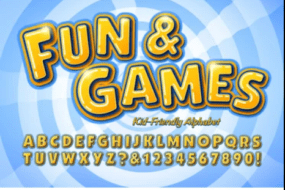
In an age of constant digital distractions, carving out quality time with family can feel like a challenge. But what if you could create magical memories at home with laughter, collaboration, and a touch of creativity? That’s where family game nights shine—offering a joyful escape from screens and stress. While board games and card games are great staples, why not take things a step further by crafting your own unique games tailored specifically to your family?
Welcome to the world of Creative Playtime—a realm where imagination leads, rules bend to fun, and everyone gets to play. Whether you’re planning an indoor evening or a backyard adventure, crafting your own games adds a personal, memorable twist to family bonding. This guide will walk you through why family game nights matter, how to design your own games, and a bunch of original game ideas to spark your next playful gathering.
Why Family Game Nights Matter
Before diving into crafting games, let’s take a moment to appreciate what family game nights do for everyone involved:
1. Builds Connection
Games give families an excuse to put down their phones and genuinely connect. Laughing over a silly challenge or teaming up for a puzzle creates shared memories and inside jokes that strengthen bonds.
2. Teaches Life Skills
Games are sneaky teachers. Kids (and adults!) learn patience, teamwork, critical thinking, and how to handle winning and losing with grace—all while having fun.
3. Fosters Creativity
Designing your own games, in particular, gives everyone a chance to flex their imagination. From storytelling to engineering a homemade game board, creativity runs wild.
4. Reduces Stress
Laughter and play are natural stress relievers. A fun game night can shift the mood in a household and give everyone a mental refresh.
How to Craft Your Own Family Games
Designing a game might sound intimidating, but it’s easier than you think—especially when your goal is simply to have fun. Here’s how to get started:
Step 1: Define Your Goals
What kind of energy do you want to bring to game night? Do you want something silly and light? Competitive? Collaborative? Fast-paced or thoughtful? Setting the tone helps guide your design.
Step 2: Consider Your Audience
Think about the ages, attention spans, and interests of your players. For younger kids, simpler rules and visual elements work best. Teens might love storytelling or strategic challenges. Everyone appreciates humor!
Step 3: Choose a Game Format
Here are a few formats to consider:
- Trivia or Q&A
- Relay or movement-based games
- Puzzle-solving or mystery games
- Story-based adventures
- Drawing or acting games
- Scavenger hunts
Step 4: Add a Creative Twist
This is where you can shine. Change the setting, create characters, invent a fictional world, or even use household objects as part of the gameplay. Let your family’s personalities inspire the theme.
Step 5: Write Simple Rules
Keep instructions short, clear, and open to interpretation. The simpler the better, especially for younger players. Don’t be afraid to bend your own rules to make things more fun as you go.
Step 6: Playtest and Adapt
Once you’ve tried the game, get feedback and adjust. You’ll likely uncover ways to make it smoother or more exciting the second time around.
10 Unique Family Game Ideas to Try or Tweak
Here are some fresh, original games to inspire your next family night. Use them as is or modify them to make them your own.
1. Mystery in a Minute
Concept: A mini mystery-solving challenge where each family member plays a character.
How to Play:
- One person is the “Detective,” the others are “Suspects.”
- The “Crime” is a silly household mystery (Who ate the last cookie? Who moved the remote?)
- Each suspect has to make up a quick backstory (where they were, what they were doing).
- The Detective has one minute to ask questions and solve the mystery.
Twist: Add in a prop or clue for each suspect to make the game more visual.
2. Cardboard Kingdom
Concept: Build your own kingdom using recycled materials.
How to Play:
- Provide boxes, paper rolls, markers, glue, and tape.
- Each player gets 15 minutes to build part of a “kingdom” (a castle, marketplace, dragon cave).
- Once built, everyone gives a mini tour and invents a story about their section.
Twist: Introduce a challenge (like a dragon attack or flood) and everyone must modify their builds accordingly.
3. Household Olympics
Concept: A high-energy game with wacky “sports” using everyday items.
Events Include:
- Spoon Sprint: Race while balancing an object on a spoon.
- Sock Toss: Throw rolled-up socks into a laundry basket.
- Paper Plate Frisbee: See who can glide their plate the farthest.
Scoring: Keep points or just cheer loudly. Optional medals or certificates make it even more fun.
4. The Floor is Lava—Story Mode
Concept: A twist on the classic game with added storytelling.
How to Play:
- Set up pillows, chairs, or mats around the room as “safe zones.”
- One person is the narrator guiding players through a story (e.g., escaping a volcano).
- Players must follow the story and move accordingly, avoiding the floor.
Twist: Add challenges (collect an artifact, defeat a monster) to increase the adventure.
5. Whodunit: Family Edition
Concept: Create a murder mystery game featuring household characters.
How to Play:
- Use stuffed animals, dolls, or drawn characters.
- Write out a simple mystery involving 3–5 suspects and one “crime.”
- Let everyone play detective or take turns playing characters.
Twist: Everyone takes part in creating the mystery before solving it!
6. Silly Spelling Bee
Concept: A spelling bee where words don’t have to be real.
How to Play:
- A host calls out made-up words (like “glorbnack” or “snizzleflap”).
- Players must spell them out loud.
- Bonus round: Define the word or use it in a sentence.
Twist: Award points for creativity and humor as well as accuracy.
7. Family Time Capsule Trivia
Concept: A trivia game using personal family history.
How to Play:
- Prepare questions about your family (e.g., “What year did we get our dog?” or “Who fell into the pool on vacation?”).
- Everyone tries to answer, earning points for correct or funniest responses.
Twist: End the game by adding a keepsake or written memory into a real or symbolic “time capsule.”
8. Backwards Charades
Concept: Flip the classic charades formula.
How to Play:
- One person guesses while the rest of the family acts out the word or phrase together.
- The guesser can only ask yes/no questions and has 90 seconds.
Twist: Use themed rounds (e.g., animals, movies, food).
9. Build-a-Story Chain
Concept: A collaborative storytelling game with props.
How to Play:
- One person starts a story with a sentence.
- Pass a random object to the next person, who must include it in their part of the story.
- Continue the chain until you reach a wild conclusion.
Twist: Record the story on video for future laughs!
10. Mission: Impossible (Home Edition)
Concept: A stealthy, cooperative game with spy-style missions.
How to Play:
- Create 3-5 “missions” (e.g., sneak into the kitchen without being seen, retrieve a hidden object, deliver a secret message).
- Assign roles (spy, look-out, agent).
- Use flashlights, music, or costumes to boost the drama.
Twist: Use walkie-talkies or your phone as secret communicators!
Make It a Tradition
Once your family has tried making their own games, you might be surprised how often everyone asks for a repeat performance. Consider making DIY game night a regular tradition:
- Rotate the “game master” role each week so everyone gets a turn to lead.
- Keep a “Game Night Journal” to track favorite moments, scoreboards, and silly quotes.
- Create a family trophy (homemade, of course!) to award for best sport, funniest moment, or most creative idea.
- Pair game night with themed snacks or music to match the game (e.g., popcorn for mystery night, tropical drinks for island-themed games).
Final Thoughts
Family nights don’t have to be expensive or elaborate to be unforgettable. By crafting your own games, you invite everyone into a space where imagination, laughter, and connection rule. Whether you’re dodging lava, chasing sock-toss gold, or unraveling a made-up mystery, the joy comes from doing it together.
So next time you’re looking for something fun to do as a family, put down the remote, grab some paper, props, or pillows, and let your inner game designer shine. Who knows—you might just invent the next family classic.
Let the games begin!






















